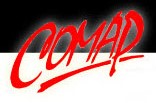SU Students Score High in 2017 COMAP MCM/ICM Competition
Monday June 26, 2017
 SALISBURY, MD---“When will I ever use this in real life?”
SALISBURY, MD---“When will I ever use this in real life?”It’s a question nearly every math teacher has been asked by a student at some point. The answer, fortunately, is simple: Nearly every person on the planet uses mathematics on a daily basis, whether they realize it or not.
The Consortium for Mathematics and Its Applications (COMAP) underscores the importance of math in everyday use during its annual Mathematical Contest in Modeling and Interdisciplinary Contest in Modeling (MCM/ICM), challenging over 8,000 teams of high school and undergraduate students to solve real-world issues.
This year, ¾ÅÐãÖ±²¥ students proved to be some of the best in the world at coming up with solutions to these problems.
“We’ve almost always had one or two teams participate,” said Dr. Bob Tardiff of SU’s Mathematics and Computer Science Department. “This year we had a record six teams, with two in the top 10 percent and one in the top 40 percent.”
Each team works on a problem in one of six categories: continuous mathematics, discrete mathematics, data insights, operations research and network science, environmental science and policy.
During the competition, teams identify their problem, make simplifying assumptions, develop mathematics to address the issue, test their calculations with real or simulated data, critique the solution, document their sources and design a final report as if preparing it for a CEO.
The two SU teams scoring in the top 10 percent earned the competition’s “Meritorious” designation. Adam Jump of Pocomoke City, MD; Richard Quackenbush of Pittsville, MD; and Amy Vennos of ¾ÅÐãÖ±²¥ used equations to design merge lanes after a toll plaza. Chelsey Clement of Denton, MD; Joshua Easter of Elkton, MD; and Michael Moses of ¾ÅÐãÖ±²¥ put their math skills to use designing an optimal protocol for efficiently moving passengers through an airport security checkpoint. Dr. Steven Hetzler of the Mathematics and Computer Sciences Department was the advisor for both teams.
The SU team scoring in the top 40 percent, also working on the merge lane problem, received an “Honorable Mention” designation. Advised by Tardiff, it included Jessica Banachowski of Annapolis; Morgan Iachini of Parkton, MD; and Alissa Talbert of Eden, MD.
Additional SU teams, advised by Tardiff and Dr. Lori Carmack of the Mathematics and Computer Science Department, earned “Successful Participant” designations. Two of those teams also helped solve the merge lane question, while the third modeled traffic flow on congested highways with a mix of self-driving and regular vehicles.
Students on those teams included Christy Bertolaccini and Sarah Hayden of Mt. Airy, MD; Andrea Carmack, Grace Malcom and Amber Ngo of ¾ÅÐãÖ±²¥; Kyle Gahagan and Samantha Maillie of Elkton, MD; John Hillman of Deale, MD; and Shane Negus of Alpharetta, GA.
The MCM/ICM’s roots can be traced back to SU, where Dr. Ben Fusaro, then a professor at ¾ÅÐãÖ±²¥, sought to create a mathematical modeling competition in which students would address real-world problems over an extended period of time with access to inanimate resources, reflecting the way similar issues are addressed in real life. As chair of the Society for Industrial and Applied Mathematics’ education committee at that time, he worked with colleagues at several institutions nationwide to establish the contest with 90 teams in 1984.
For more information call 410-543-6030 or visit the SU website at www.salisbury.edu
